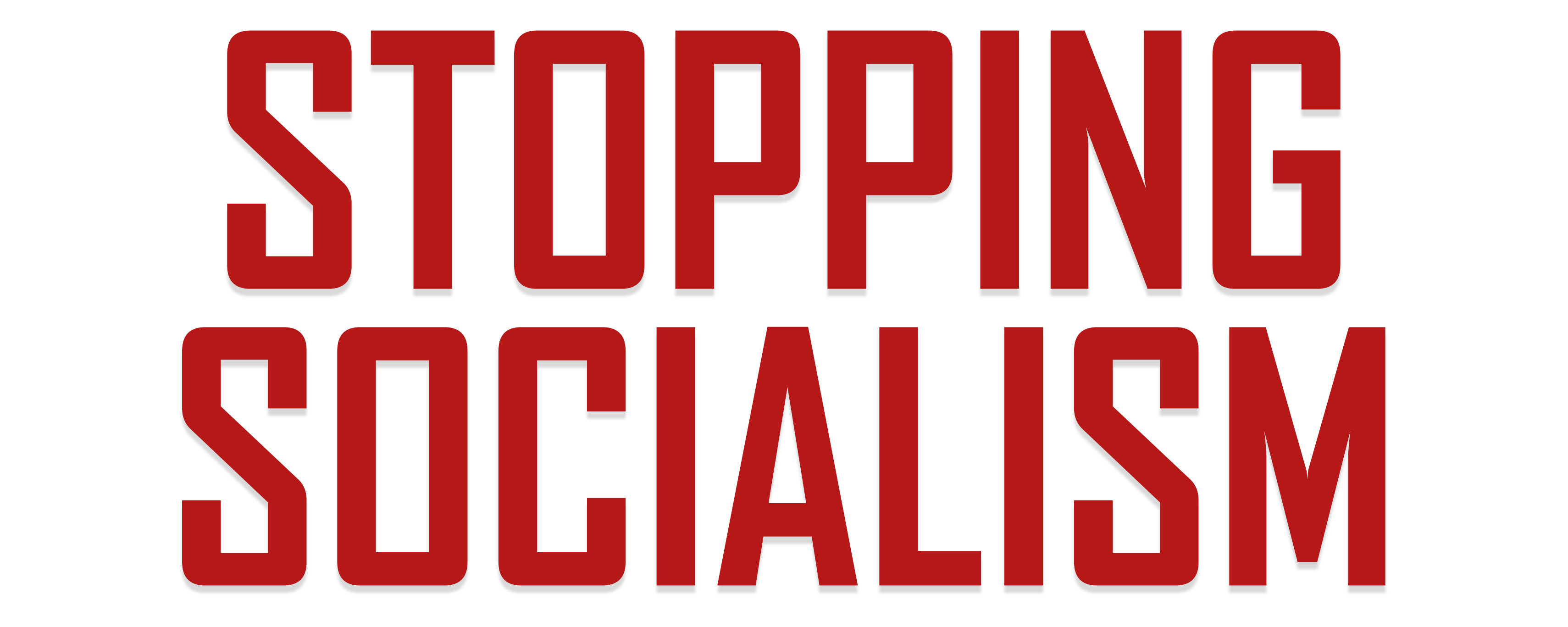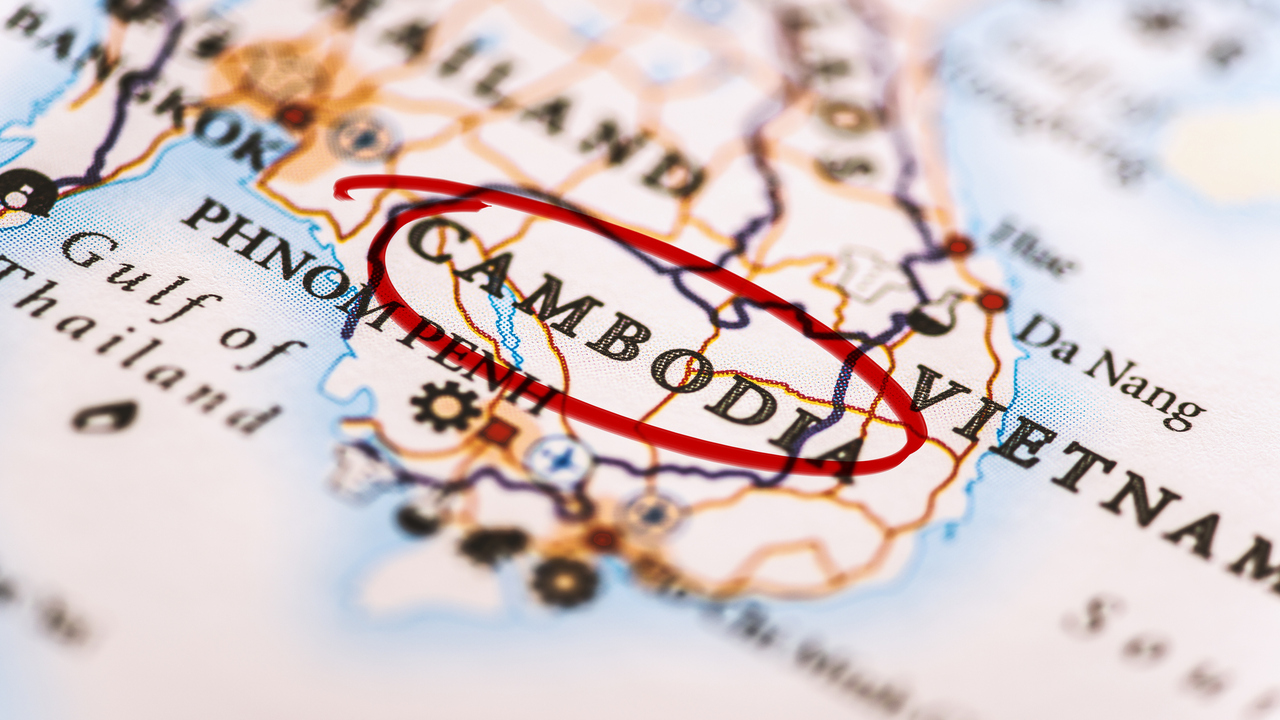In 1975, Pol Pot and the Communist Party of Kampuchea (CPK)—also known as the Khmer Rouge—overthrew the Cambodian Khmer Republic after a five-year civil war. What ensued was perhaps the most depraved and horrific period of repression in the history of socialism, beyond that of Mao’s China or Stalin’s Soviet Union.
One survivor of the Cambodian genocide, Pin Yathay, attempted to escape Cambodia “to bring news of the genocide in Cambodia… to tell how several million men, women, and children were all coldly programmed for death… how the country was razed to the ground and plunged back into a prehistoric era, and how its inhabitants were tortured so relentlessly… I wanted to live so that I could beg the world to come to the aid of the survivors and try to prevent total extermination.”
Rather than attempting to gradually implement socialism, which is one of the core tenets of Marxist-Leninist orthodoxy, Pol Pot attempted to formulate a complete communist “utopia” in one fell swoop. Pot’s regime emptied all urban population centers in one week. The CPK immediately abolished money. Social distinctions were suppressed by the elimination of entire classes, such as property owners, intellectuals, and businessmen. Total collectivization was achieved in less than two years.
Mass Deportations and Forced Collectivization
Following the Khmer Rouge’s victory, they completely evacuated the Cambodian capital of Phnom Penh. Citizens had only 24 hours to leave their homes, and were swiftly deported to the countryside. Approximately 10,000 people died during the evacuation, primarily the old, sick, and the infirm, many of whom committed suicide. The first classification of city dwellers took place during this first deportation, at the roadside in the country. The aim was to find as many army officers and middle- and high-ranking officials as possible. Most of them were immediately massacred or died shortly afterward in Pol Pot’s prisons—which were essentially death camps.
The sudden surge of urban residents into the countryside brought about significant disturbances in rural existence, particularly impacting the equilibrium between resource availability and utilization. In a region situated in the northwest, the pre-existing population of 170,000 was bolstered by an additional 210,000 newcomers—known as “New People.” The CPK dedicated its efforts to creating divisions among the rural natives and the ex-urban newcomers, attempting to provoke class antagonism between the “loyal working class” and the “servants of capitalist imperialism.” They established a dual legal structure, which endowed only the rural populace with any rights, though these rights were severely limited. A system resembling apartheid was promptly instituted. The two demographics were segregated into different areas within the villages and were even forbidden from conversing and socializing with each other, not to mention prohibited from marrying.
As part of total collectivization, the peasants were divided into “poor peasants,” “landed peasants,” “rich peasants,” and traders. Among the city dwellers, non-civil servants and those who lacked an education were soon separated from former civil servants and intellectuals. These latter two groups were purged little by little until both groups disappeared entirely. After 1978, the purges even included women and children.
Pol Pot and the Khmer Rouge planned to achieve four primary objectives through these forced deportations. First, they aimed to eliminate any possible political opposition by disrupting any potential lasting connections between the peasants and the New People. Second, the regime attempted to “proletarianize” the New People by preventing them from harvesting their own crops and stripping them of material possessions. Third, the CPK sought to maintain totalitarian control over the population’s movements by instigating expansive agricultural programs, such as farming in the underdeveloped mountain lands and scarcely inhabited jungle regions at the peripheries of the country. Finally, they planned to rid Cambodia of “useless mouths,” with each successive evacuation leading to substantial attrition among the undernourished.
Gradually, individuals were divested of their belongings. Education, freedom to travel, commerce, health care, religion, and writing vanished. A stringent dress code was enforced; most citizens were required to wear black, long-sleeved shirts buttoned at the collar. Pot’s regime also implemented strict behavioral codes, outlawing all public displays of affection, arguments, insults, complaints, and crying. Blind obedience to all authority figures was mandatory. As declared in the 1976 Constitution, the foremost right of all citizens was to work, which turned out to be the only “right” most people were granted. The regime’s inception saw a drastic surge in suicides, notably among those torn from their family and loved ones, as well as the elderly who viewed themselves as burdens to their kin.
Agricultural Collapse and Population Reduction
Pot’s economic plan, encapsulated in the Four-Year Plan of 1976, was based primarily around agricultural reform. Agricultural products were the country’s only obvious resource at the time
The leaders seemed convinced that the radiant future was just around the corner. At the end of the Four-Year Plan presented by Pol Pot in August 1976, his next objective was to boost production massively by increasing capital through the export of agricultural products. Meanwhile, most forms of technology, not to mention any sort of innovation, were completely rejected. Rather than allowing those with experience tilling the earth to make basic operational decisions, the CPK mandated all agricultural policy, which was infused with total uniformity.
CPK elites ordered that all dikes dividing the rice fields be removed so that all fields would measure exactly one hectare. The agricultural calendar for the year was regulated by the centralized CPK, regardless of local ecological conditions. Rice production was the only measure of success. Some communist leaders decided that all trees—including those bearing fruit—should be cut down to make room for more farmland, which destroyed the avian habitat and eliminated a vital source of food for what would soon be a starving population.
Despite the fact that rice production had remained steady at one ton per hectare since 1970, farmers were commanded to triple their output to three tons per hectare. To achieve this, workers were typically forced to start their day at 4:00 AM and work until at least 10:00 PM. Almost no rest days were given, and the majority of these workers were severely malnourished.
The results were devastating. The amount of land being actively farmed fell 50 percent from its pre-1975 level. Many rural areas became completely vacant, and established farms were left derelict due to the constant deportations to newly deforested areas.
Many claim the regime deliberately used famines to control the populace. By limiting the food supply, the CPK diminished the physical energy of its workforce, making them less likely to successfully run away or oppose CPK leaders. The persistent preoccupation with food deprivation eradicated independent thought, capacity to argue, and sexual desire. The strategy also weakened interpersonal bonds, even between parents and their children, who had to compete for scarce food. Dismantling familial connections was crucial to the totalitarian regime’s strategy to foster complete dependence upon the CPK. Husbands and wives were intentionally separated, children were kept from their extended families, and adolescents often went months without seeing their mother or father. The CPK even encouraged mothers to spend as little time with their newly born children as possible.
The CPK also manipulated food to encourage acceptance of total food collectivization. Collective “canteens” became widespread in early 1976, with most Cambodians reduced to a diet of thin rice soup, containing four teaspoons of rice per person. Prior to 1975, the average Cambodian adult consumed approximately 400 grams of rice, which is around one box. Under the Khmer Rouge, a box of rice was usually shared between six people. The starving population resorted to eating crabs, frogs, snails, lizards, snakes, red ants, large spiders, pig food, rats, poisonous mushrooms, and forest roots. Many died as a result of their new “diet,” with many more forced to seek medical care. However, hospitals were not meant for recovery under Pol Pot. Under the CPK’s health care system, already meager rations were cut in half for patients, and they became hubs for epidemics. According to one observer, “the purpose of the hospitals was more to eliminate the population than to cure it.”
Hunger completely dehumanized the population. In one instance, a former teacher ate the corpse of her dead sister. In another, the inmates of a hospital ward ate a young man. Cannibalism also existed as an act of revenge. One Khmer Rouge deserter was forced to eat his own ears before being executed. There are also many stories about the eating of human livers. In one prison, the fetus, liver, and breasts of a pregnant woman who had been executed were consumed by starving inmates.
Genocide
While famine afflicted the vast majority of the population, the CPK began to look inward for dissidents, purging itself of any who did not toe the Pol Pot line.
There were never any trials or clear charges brought against supposed counter-revolutionaries, and everyone who was imprisoned was tortured in a barbaric fashion before being killed. Pol Pot’s aim was to crush anyone who showed exceptional qualities, or the slightest sign of a spirit of independence. Any quality that might threaten the preeminence of Pol Pot led to repression. The paranoia among the leadership was like a caricature of the worst excesses of Stalin. By 1978, five of the 13 original highest ranking CPK officials had been executed, along with most regional leaders. Two of the seven leaders who took office in 1978 were killed in the same year. Liquidations were also carried out at the grass-roots level. According to one estimate, 40,000 of the 70,000 inhabitants of one district were killed due to suspected affiliation with the U.S. Central Intelligence Agency.
The largest genocide took place in the eastern zone, which bordered hostile Vietnam. According to estimates, 100,000 to 250,000 people in this zone were killed out of a population of 1.7 million. In the village of one prominent anti-Pol Pot leader, all 120 families (700 people) were massacred. In one village in the northwest, only 100 people out of the original 3,000 survived. At the genocide’s apex, women, children, and old people were massacred alongside young men, and original peasants were killed along with the New People. Because the extermination was so overwhelmingly large, the Khmer Rouge forced the ordinary population to help them carry out the mass murders. After July 1978, any survivors of the purge were deported to other zones, where they were forced to wear blue; everyone else under Pol Pot’s rule wore black. Gradually, everyone who dressed in blue disappeared, either being executed or imprisoned—which in and of itself was essentially a death sentence.
Death Camps
Pol Pot claimed in August 1978 that “we don’t have prisons, and we don’t even use the word ‘prison.’” In a way, Pot was correct; Cambodian prisons were more akin to Nazi concentration camps than traditional forms of confinement. The conditions were deplorable, and designed to allow for sadistic torture and population reduction. One box of rice was used to feed forty prisoners. There were no medical facilities, toilets, or the ability to wash oneself. Overcrowding was endemic. Prisoners were kept in chains. Average life expectancy under these conditions was three months. Most prisoners were tortured into giving confessions about their previous employment or their “subversive” activity, with the primary means of interrogation being asphyxiation via plastic bag. Once prisoners had confessed, they were almost always murdered, either being stabbed with knives or clubbed with iron bars. Loudspeakers would blare revolutionary music to disguise the screams of the tortured and executed victims.
Moreover, there was no minimum age for confinement. According to the account of one former official: “What moves us most was the fate of twenty young children… these children stole because they were too hungry. They had been arrested not so that they could be punished, but so that they could be put to death in an extremely savage manner: prison guards hit or kicked them to death; they made living toys out of them, tying up their feet, hanging them from the roof, swinging them, and then steadying them with kicks; near the prison there was a pond, the executioners threw the children into it and held them down by their feet, and when they started to thrash about they would let their heads up, and start the process all over again.”
Execution and “imprisonment” were not only reserved for former civil servants or city dwellers. For instance, monks were systematically exterminated; nationwide, their number fell from 60,000 to just 1,000. Nearly all academics and members of the press were killed as well, with the former only allowed to live if they renounced their profession and gave up their books and eyeglasses. As one survivor remembers, “In Democratic Kampuchea, there were no prisons, no courts, no universities, no schools, no money, no jobs, no sports, and no pastimes… There was no spare moment in the twenty-four-hour day. Daily life was divided up as follows: twelve hours for physical labor, two hours for eating, three hours for rest and education, and seven hours for sleep. We all lived in an enormous concentration camp.”
The CPK promoted the idea that human life had no value. One of the Communist Party’s slogans was: “Losing you is not a loss, and keeping you is no specific gain.” To save bullets and to satisfy the sadism of the CPK, shooting was not even the primary means of execution. One study estimates that only 29 percent of people died that way. Sadly, 53 percent were killed by blows to the head inflicted with iron bars, axes, or other agricultural tools; 6 percent were hanged or asphyxiated by plastic bags; and 5 percent had their throats slit. Some executions were public demonstrations, with the victims being burned or buried alive.
Aftermath
Pol Pot and the Khmer Rouge were finally overthrown in 1979 by an alliance forged between the Vietnamese military and Cambodian revolutionaries. Pot led the Khmer Rouge resistance to the newly christened People’s Republic of Campuchea for more than a decade, after which Khmer Rouge forces were systematically hunted down and destroyed. Pot managed to escape justice, dying in his sleep in 1998. His influence, however, has left an indelible mark on his country and his people.
In 1979, 42 percent of the country’s children had lost at least one parent. They were three times more likely to have lost their father than their mother. Seven percent had lost both parents. One study estimates that 33.9 percent of men were killed, along with 15.7 percent of women. By 1990, the total population had still not returned to the level of 1970, and the ratio of women to men was still unbalanced at 1.3 to 1. Additionally, 82.6 percent of former military officers, 51.5 percent of intellectuals, 48.6 percent of Catholics, 41.9 percent of former Phnom Penh residents, and 40.6 percent of Muslims were murdered during the genocide, among other staggering demographic proportions.
Over only three years and eight months, Pol Pot and the Communist Party of Kampuchea killed approximately two million people, out of a population of less than 8 million. This means that Pol Pot was responsible for the death of over 25 percent of the Cambodian population. Moreover, their misguided socialist policies left the nation’s economy in ruins. According to the World Bank, the GDP per capita for Cambodia was $247 in 1993. That same year, the GDP per capita for the United States was $26,387.
Jack McPherrin (jmcpherrin@heartland.org) is a managing editor of StoppingSocialism.com, research editor for The Heartland Institute, and a research fellow for Heartland's Socialism Research Center. He holds an MA in International Affairs from Loyola University-Chicago, and a dual BA in Economics and History from Boston College.






